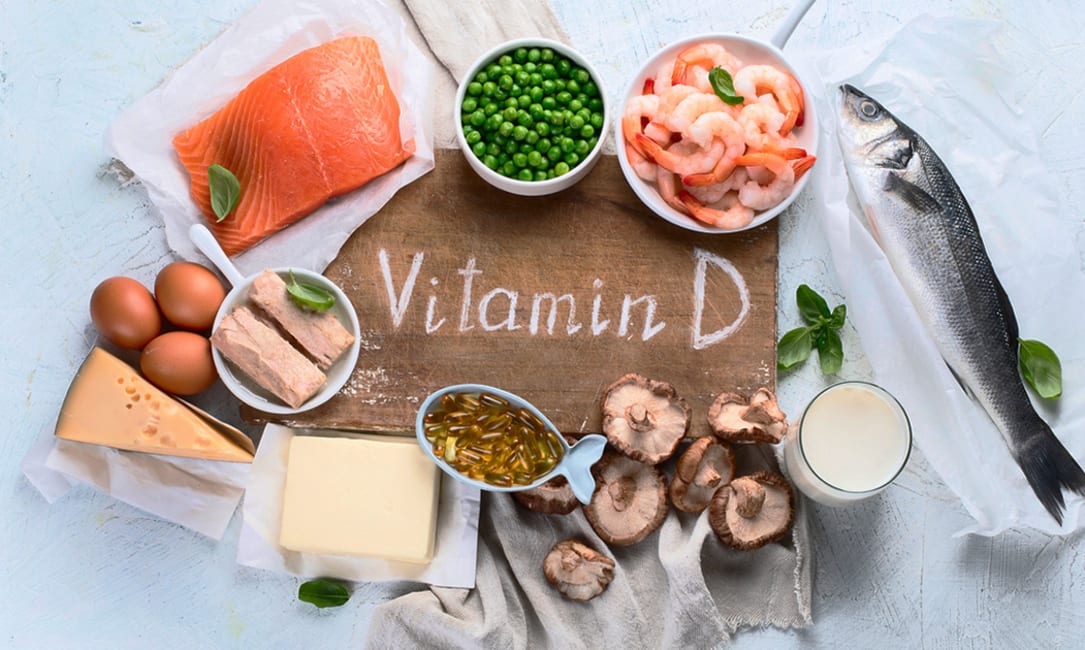Best Time to Get Vitamin D from Sun in Malaysia

What Is Vitamin D?
Vitamin D is a fat-soluble vitamin, meaning that it dissolves in fats and oils and can be stored in your body for a long time.
Two main dietary forms exist (Trusted Source):
- Vitamin D3 (cholecalciferol). Found in some animal foods, like fatty fish and egg yolks.
- Vitamin D2 (ergocalciferol). Found in some plants, mushrooms, and yeasts.
Of the two, D3 (cholecalciferol) seems to be almost twice as effective at increasing blood levels of vitamin D as D2 (ergocalciferol) (Trusted Source, Trusted Source).
What Does It Do in Your Body?
Vitamin D needs to undergo two conversion steps to become active (Trusted Source, Trusted Source).
First, it is converted to calcidiol, or 25(OH)D, in your liver. This is the storage form of the vitamin.
Second, it is converted to calcitriol, or 1,25(OH)2D, mostly in your kidneys. This is the active, steroid-hormone form of vitamin D.
Calcitriol interacts with the vitamin D receptor (VDR), which is found in almost every single cell in your body (Trusted Source, Trusted Source).
When the active form of vitamin D binds to this receptor, it turns genes on or off, leading to changes in your cells. This is similar to how most other steroid hormones work (Trusted Source, Trusted Source).
Vitamin D affects various cells related to bone health. For example, it promotes the absorption of calcium and phosphorus from your gut (Trusted Source).
But scientists have recently discovered that it also plays roles in other areas of health, such as immune function and protection against cancer (Source).
Best Time to Get Vitamin D from Sun in Malaysia
Most studies show that approximately 10 – 25 minutes of sun exposure between 11.00 am and 2.00 pm at least twice a week to the face, arms, legs, or back without sunscreen will usually provide sufficient daily vitamin D requirements (Harinarayan, 2013, Alshahrani, 2013, Holick, 2007).
The amount of sun exposure needed to synthesize adequate vitamin D depends upon the type of skin, time of the day, the month of the year, and the latitude.[Reichrath, 2014] The duration needed in an individual with dark skin is about 10 times that in fair-skinned individuals.
It has been suggested that exposure to sunlight for 5 min to 5 h per day (depending upon the above-mentioned factors) may be sufficient to synthesize our daily requirement of vitamin D.
However, a recent study from India found that despite an intense sun exposure, 90% of infants continued to have vitamin D insufficiency and needed supplementation.[Karthikeyan, 2017] This fact is often not emphasized. A similar study from New Delhi, India that was carried out in school-age children found no increase in vitamin D levels, 4 weeks following sun exposure.[Marwaha, 2016]
Farrar et al. (2013) published a study from the United Kingdom (UK) that included volunteers from South Asian countries (India, Pakistan, and Bangladesh) staying in the UK and exposed 35% of their body surface area to variable doses of UV rays in a controlled environment for 6 weeks.[Farrar, 2013] It was found that vitamin D levels rose significantly after UV exposure. However, a significant proportion of subjects still remained vitamin D insufficient. A similar study carried out in the UK by Farrar et al. (2011) found that UV exposure may correct vitamin D deficiency in white skin individuals but not in South Asian individuals.[Farrar, 2011]
Therefore, sun exposure alone may not be an adequate source of vitamin D for dark skin children and adults. Dietary supplementation of vitamin D is necessary. The commonly recommended daily dose of vitamin D is 600 IU (15 mcg) (nih.gov).
Further, the American Academy of Pediatrics (AAP) has stated that “Use of deliberate sun exposure to maintain vitamin D sufficiency is not recommended” and “Infants younger than 6 months should be kept out of direct sunlight as much as possible.”
Also, UV (Ultraviolet) rays are immunosuppressive. UV rays damage the the skin and stimulate the regulatory T cells to produce the immunosuppressive cytokine. UV radiations can also lead to DNA strand breaks.
Best Food Sources of Vitamin D
Here is the vitamin D3 content of a few of the best food sources (nih.gov):
Food | Amount | % RDI |
Cod liver oil, 1 tablespoon (15 ml) | 1,360 IU / 34 mcg | 227% |
Salmon, cooked, 3 ounces (85 grams) | 447 IU / 11 mcg | 75% |
Tuna, canned in water, 3 ounces (85 grams) | 154 IU / 4 mcg | 26% |
Beef liver, cooked, 3 ounces (85 grams) | 42 IU / 1 mcg | 7% |
1 large whole egg (D is found in yolk) | 41 IU / 1 mcg | 7% |
1 sardine, canned in oil, drained | 23 IU / 0.6 mcg | 4% |
Although fatty fish like salmon, mackerel, swordfish, trout, tuna, and sardines are decent sources, you would have to eat them almost every day to get enough.
The only excellent dietary source of vitamin D is fish liver oil — such as cod liver oil — which contains upwards of two times the Reference Daily Intake (RDI) in a single tablespoon (15 ml).
Keep in mind that dairy products and cereals are often fortified with vitamin D (Trusted Source).
Some rare mushrooms also harbor vitamin D, and egg yolks contain small amounts.
References:
Buy Vitamin D supplement in Malaysia: You can purchase Vitamin D as a dietary supplement online and from local health stores i.e. Guardian and Watson.




.png)


Comments
Post a Comment